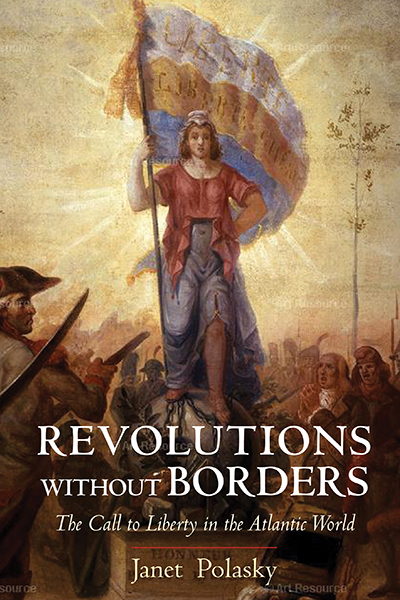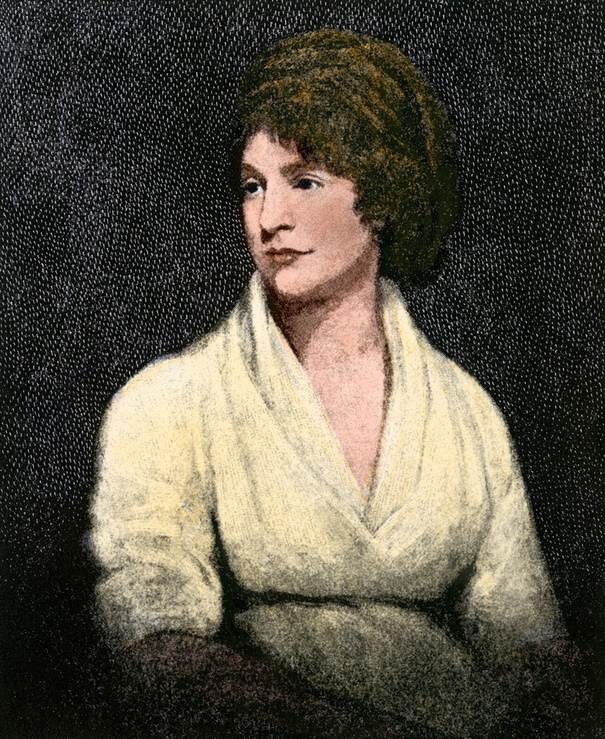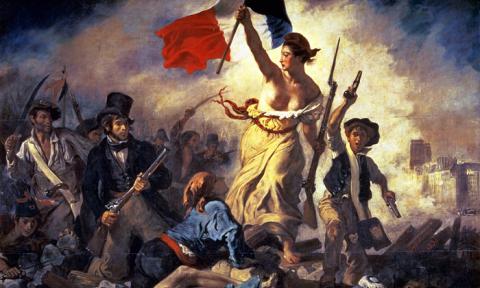There is no official resting place for the 18th-century revolutionary, Thomas Paine. He died in Greenwich Village, New York, in 1809 and for 10 years was buried under a walnut tree on his New Rochelle farm. Then in 1819, William Cobbett, a critic-turned-disciple of Paine's, exhumed the body and took it with him to England, where he hoped to honour the patriot with a superior memorial. But when Cobbett died in 1835, the remains were still among his possessions, unburied; what happened to them next is unknown.
Revolutions without Borders: The Call to Liberty in the Atlantic World
By Janet Polasky
Yale University Press, 392 pages
Hardcover: $35.00
March 31,2015
ISBN: 9780300208948

That Paine's bones are lost and there is no specific burial site seems apt for this citizen of the world and the age of revolution he inhabited. His writings, such as Common Sense (1776), an appeal for American independence from Britain, and The Rights of Man (1791-92), a defence of the French revolution, were pitched in the lofty idiom of universal liberty, indifferent to state borders and local affections. Both texts found their way into the pockets of American and European diplomats, merchants, soldiers and students. They were reprinted in newspapers, read aloud in coffee houses, as well as translated into multiple languages. From Washington to Warsaw, Paine's incendiary message of dissent supplied a simple call to arms: "We have it in our power to begin the world over again."
As Janet Polasky shows in her bold and captivating book, Paine's Atlantic odysseys were not uncommon in the 18th century. Polasky chronicles the travellers who ignored national borders to spread ideas of liberty and equality, from the American revolution to the declaration of Haitian independence in 1804. "Two centuries before the Arab spring," she writes, "without social media or even an international postal system, revolutionaries shared ideals of liberty and equality across entire continents."
These itinerants left a trail of written records, and Polasky explores how texts and ideas circulated across nations and linguistic divides. Pamphlets, newspapers, private correspondence, novels and journals were composed and translated by people dreaming of a new world. They were transported over mountains and across seas by English abolitionists, Irish clergymen, American diplomats, Genevan exiles, Polish soldiers, African students, former slaves from the Caribbean, French tourists and Dutch translators. Crisscrossing national frontiers, they knitted together continents and peoples, rendering the Atlantic world a crucible of ideological adventurism and revolutionary struggle.
Pamphleteers rallied people to revolt in Geneva in 1782, the United Provinces in 1787 and in Belgium in 1787-89. Each looked to America as the lodestar of revolution, and those who participated considered themselves part of a wider international insurgency. During the Belgian revolt, when patriots rose up against their Austrian ruler, Joseph II, one pamphlet proclaimed: "The end of the XVIIIth century seemed predestined to witness revolutions blazing forth all over the surface of the globe."
Revolutionary tourism was a regular pastime in the late 18th century, and itinerants' journals captured the immediacy of their experiences. Polasky reminds us, though, that journals also registered moments of disillusionment. During his tour of America in 1788, the French lawyer Jacques Pierre Brissot applauded the "miracles" and "prodigious effects of liberty" he saw. Visiting the south, however, he was exposed to the slave trade - a disturbing reality that shook his preconceptions of American life. How could those who fought for their own liberty "rob other men of this same blessing"? he asked.
Newspapers translated and published articles and manifestos from other countries, in addition to spreading word of insurrections in faraway lands. In March 1794, the European public was gripped by reports emerging from Poland of a resistance movement led by Tadeusz Kosciuszko - hero of the American revolution and honorary French citizen - against the Austrian, Prussian and Russian empires, which had partitioned the country following the introduction of a constitution in 1791. Special clubs appeared in towns throughout Europe, where stories of Kosciuszko's march on Warsaw would be read aloud to exuberant crowds hailing the Polish Jacobins.
Polasky reveals the alternative spheres of political life; texts were written, consumed and debated outside of national institutions. Clubs, salons, ships' quarters, private homes and masonic lodges provided worlds that sustained a sense of collective being and shared purpose. They emphasised the cultural differences between the heroic romanticism of revolutionary politics and the stony detachment and posturing of the aristocratic court.
Since no international postal system existed, news of revolution was slow in reaching people. Time delays served to amplify rumours, creating impossible levels of expectation and alarm. Polasky displays her powers as a storyteller when describing how reports of revolution in France trickled into Saint-Domingue and Guadeloupe, where slave rebellions were afoot. Seamen versed in the slogans of Jacobinism relayed events in harbour taverns and on docks. Word spread quickly throughout the Caribbean. In the tradition of CLR James, and his magisterial work The Black Jacobins, Polasky shows how slaves adopted the language of liberty emanating from France, launching insurrections that culminated in the abolition of slavery in 1794.
She excels at weaving the biographies of her characters into a broader international story. Mindful of the possibilities opened up by political revolution, novelists such as Betje Wolff, Isabelle de CharriSre and Mary Wollstonecraft recast the role of women in their books, which were translated, reviewed and discussed throughout Europe. They questioned the virtues of the nuclear family, confronted despotic fathers, rebuffed maddening suitors and rejected the necessity of marriage. Much of their work was semi-autobiographical; Polasky highlights the ways in which ideas about liberty were shaped by personal histories as much as abstract thinking.

Mary Wollstonecraft. Photograph: Alamy
Indeed, she is careful not to reduce 18th-century revolutionaries to a homogenous group. "A Dutch pastor's wife writing a novel in a thatched garden shed will have defined liberty differently than did a free man of colour storming Grand-RiviSre at the head of a hastily mustered militia." They drew on a shared vocabulary - liberty, equality, human rights and popular sovereignty - but with different emphases and contrasting interpretations. Freedom could be proclaimed in the name of Enlightenment reason. But it could also issue from Christian notions of redemption and the fear of judgment day, as it did for British abolitionist Granville Sharp.
Revolutions Without Borders has a positive message: it not only demonstrates "that the roots of internationalism are as old as nation states", it also serves to remind us that the struggle for liberty in countries where it is denied is the essence of our common humanity. As the liberal philosopher Condorcet put it: "The more free peoples that exist in the world, the more the liberty of each individual is assured."
The darker impression, though, is how effortlessly that struggle was betrayed. Eighteenth-century cosmopolitans who fought for a borderless world were cast off by the very societies they helped to build. Returning to America in 1802, Paine was denied the right to vote, rejected by the political establishment and quietly retired to his farm. In France, Condorcet was forced into hiding and died in prison in 1794. The Committee of Public Safety also imprisoned the Prussian-born aristocrat Anacharsis Cloots, who advocated a universal republic and shared a cell with Paine when he was incarcerated in 1793. On 24 March 1794, before a large crowd, Cloots declared: "Long live the Republic of the world!" Moments later, he was beheaded.


Spread the word